Mongolia III: Through the Orkhon Valley to Karakorum
Aka, my brave little mobile phone camera & self face the heart of Mongolia. Now, several places make that claim - Genghis Khan's birth place in the east, the brief ancient capical of the Mongols, Karakorum, are contenders - but in truth, there is only one obvious reply, and it has been made a world heritage - the valleys of the Orkhon River, giving birth to three people: the Xiongu, from whom later the Huns developed, the Turks (yes, really, and the graves are there to prove it) , and the Mongols. Also, the roads are supposedly the worst of Mongolia because of the sharp basalt stones. I have no opinion on this, other than having visited Tanzania repeateadly in the past came in as really handy training.
Here's the river in question, of whom later more pictures.
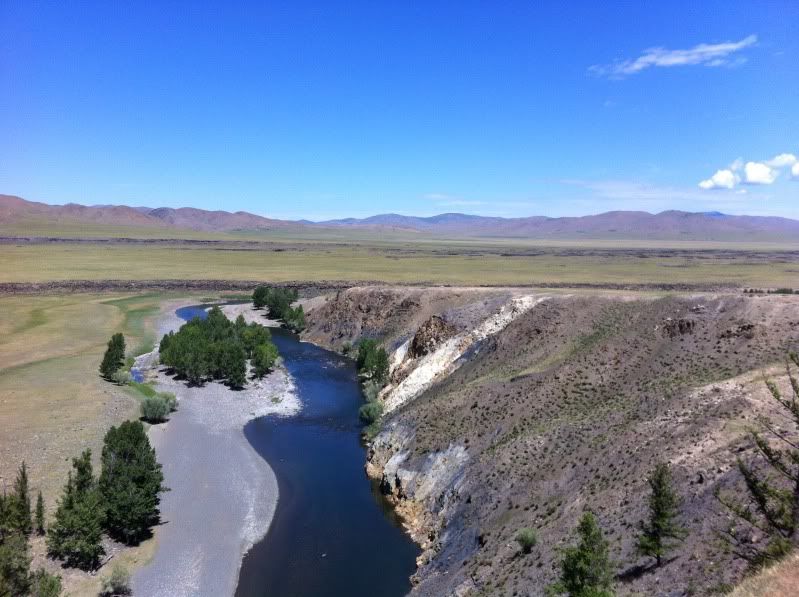
Near the site from which this picture was taken there are so many graves of both Huns and Turks that people speculate a battle may have taken place. The Huns have round gravesites and the Turks square ones.
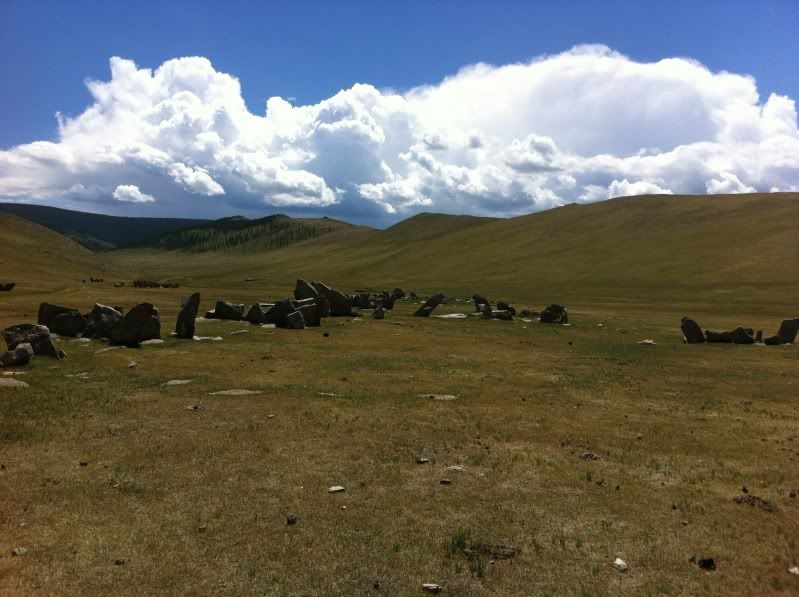
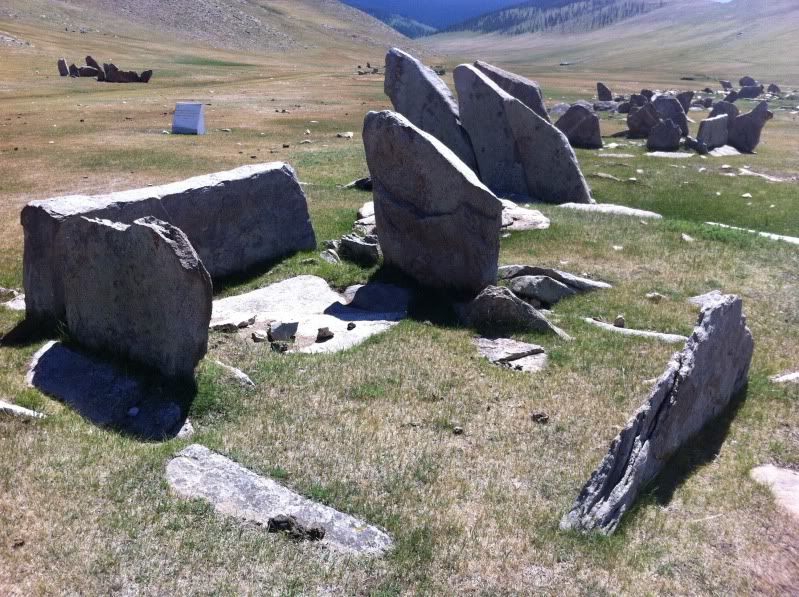
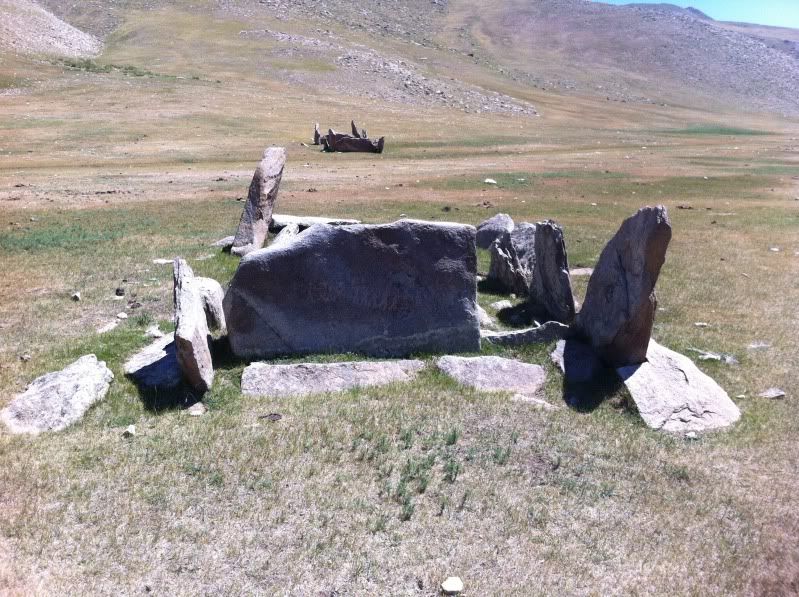

If you squint, you may be able to detect some of the engravings. They usually depict deer, which is why the stones are also named "deer stones". Nowadays, deer isn't around, but there are lots and lots of horses.
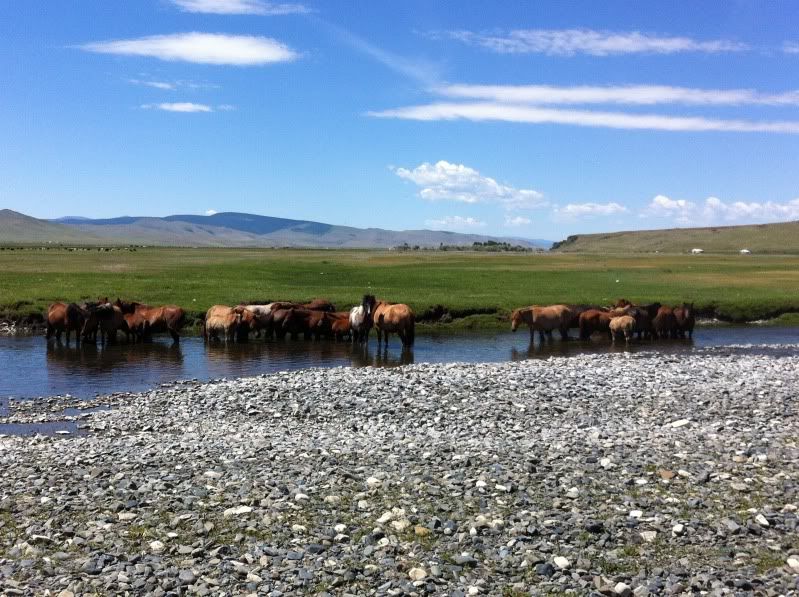
Who are the animal-loving (though never in a vegitarian sense) Mongols most favourite animals. I met a female politician in Ulan Bator who told me every second song in Mongolia is devoted to a horse, and the saying goes that a good Mongol loves: his parents, his horse(s) and his spouse, in that order. And of course, the most popular Mongolian drink since the last 2000 years has been fermented mare's milk. Horses are milked in the summer, after they've given birth to their foals, every two hours. Here's how it's done:
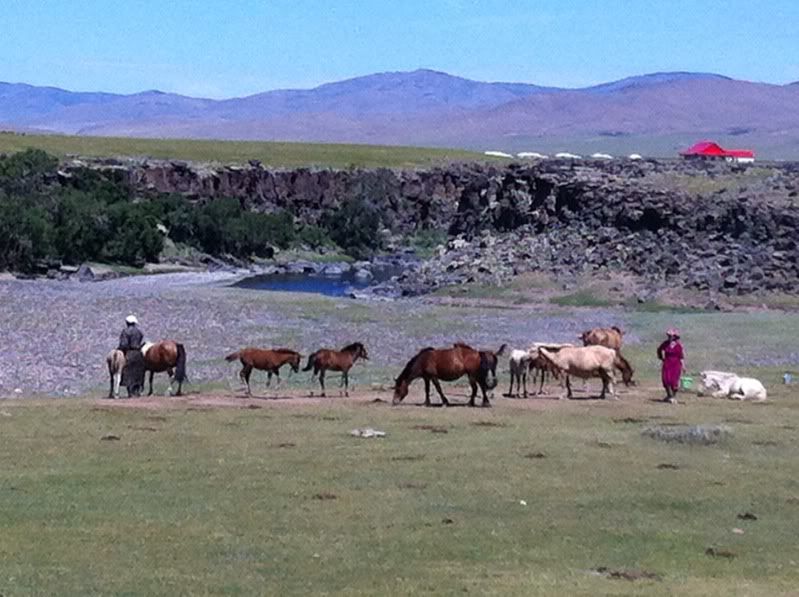
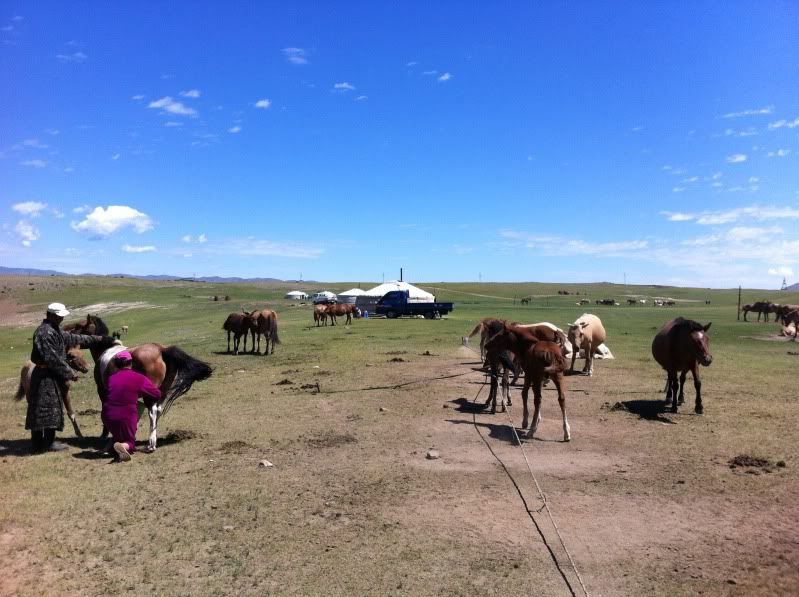
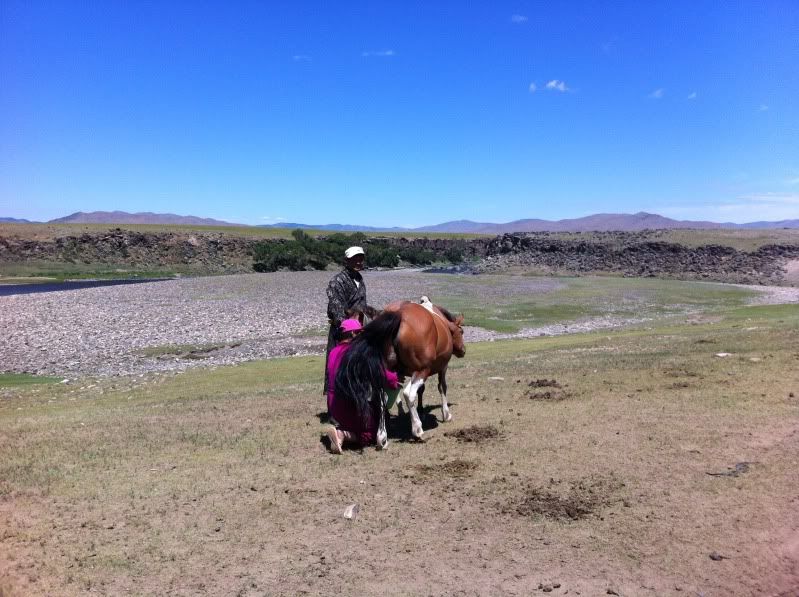
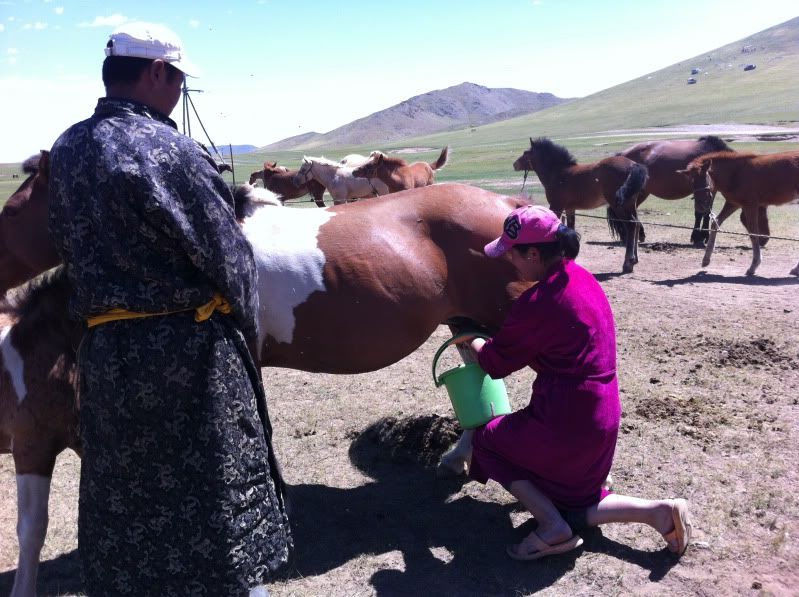
There are always two people necessary for this. One holds the foal near the mare, the other milks the mare.
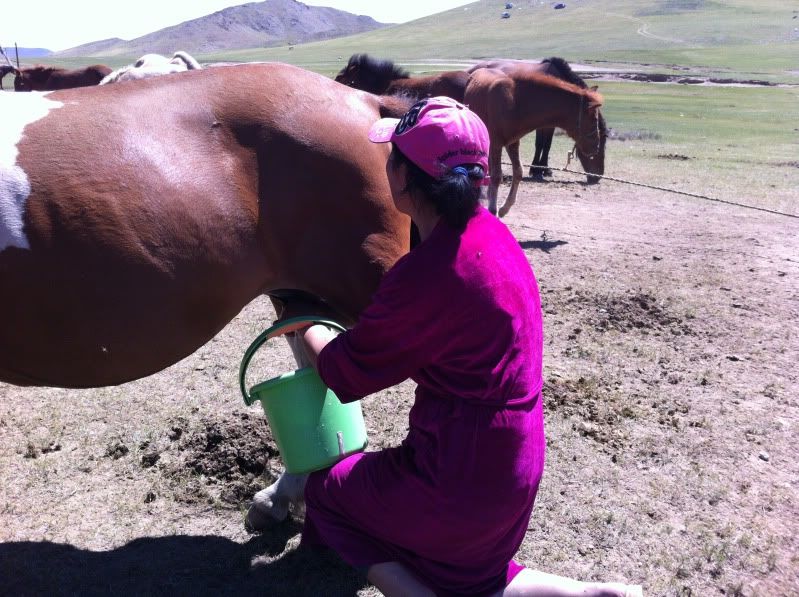
The milks is then stirred, usually by children who are taught to count by this, a thousand times for each child, traditionally in something like this (though these days in modern buckets):
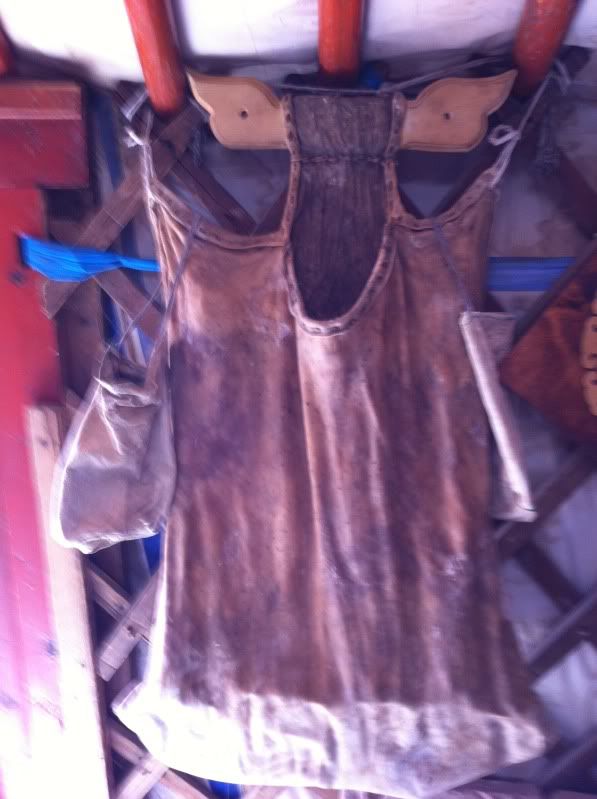
But the times, they are changing. This used to be the site of a splendid waterfall. Not anymore:
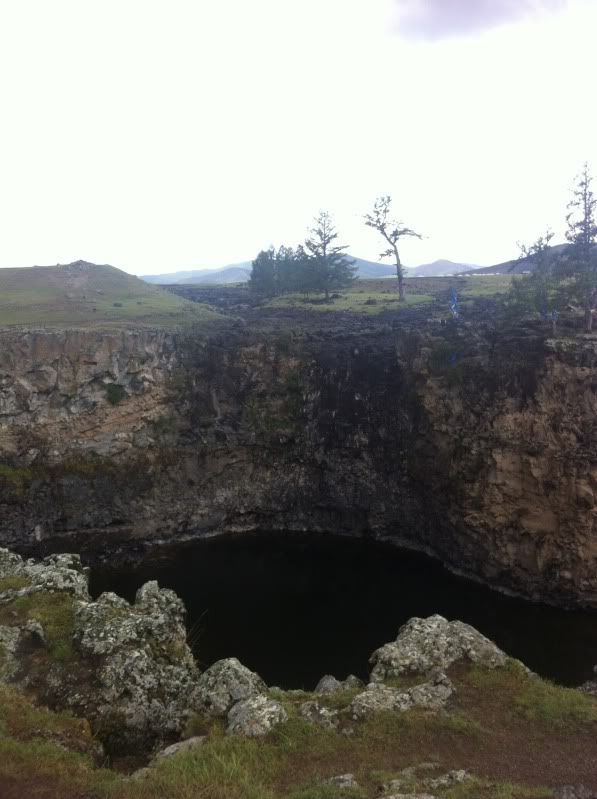
Though the Orkhon itself still runs through the land that depends on it:
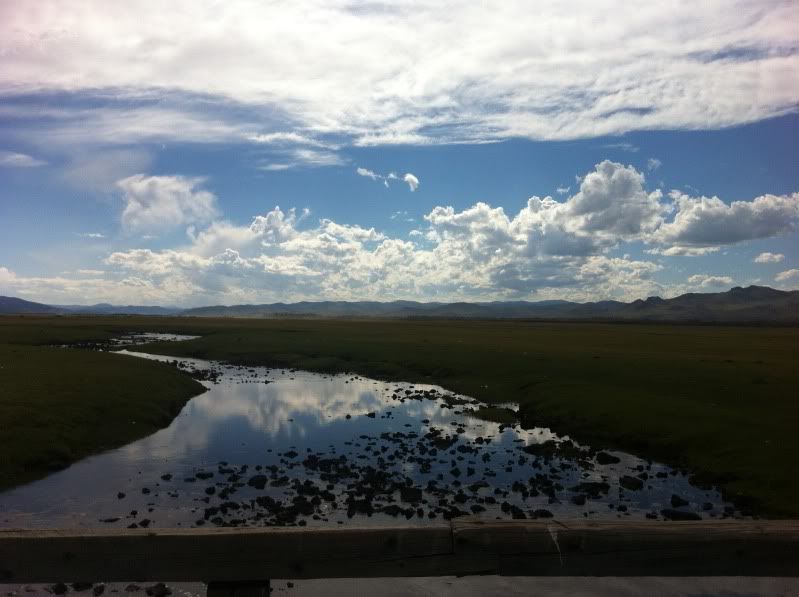
Next, a photo which was taken near our camp for the night. We could hear the river in our ger.
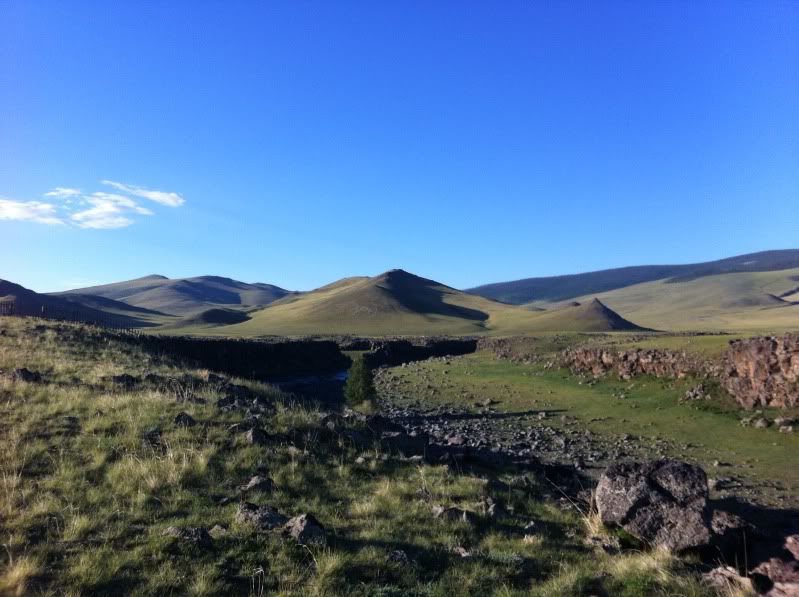
You may have noticed the start of another picture made by white stones on the hillside in the distance. This was done through the entire day and by evening, they had two legs and the tail. It wa supposed to be, of course, a horse. The next morning, we set out for the nearby Tuvkhun monastery. For which we had to cross the Orkhon, and I'm not talking about a bridge here. (Though there are some - the last but one photo was taken from one) - just not many. Our driver Myagaa (pronounced Meega) stopped when we came to the river, got out and drank a sip from its water. According to Davaa, Mongol drivers do this in order to show their respect to the river and ask for safe passage.
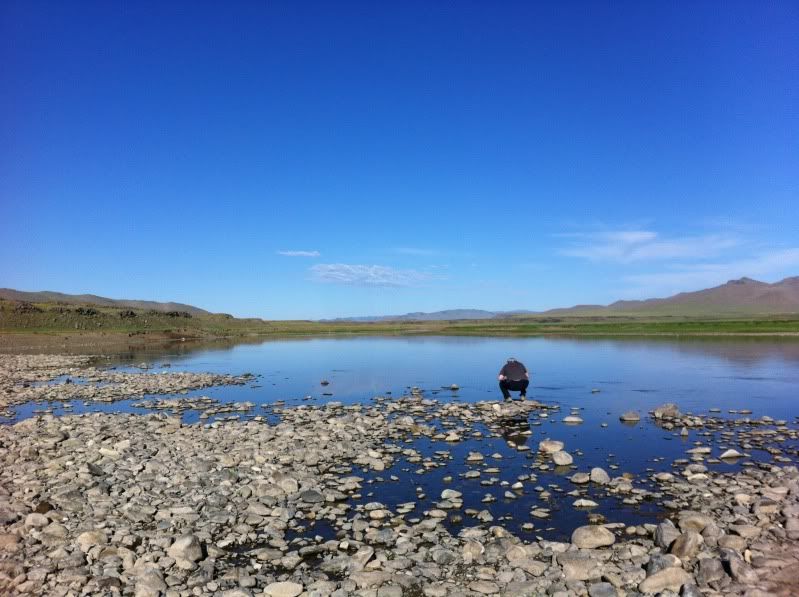
It worked. The Tuvkhun monastery was familiar to Myagaa, by the way; one of his sons who is studying to be a Lama spent three months up there for meditation. When he was fifteen. In the winter. The whole thing is 2400 metres above ground, and you walk up there. Then you see this:
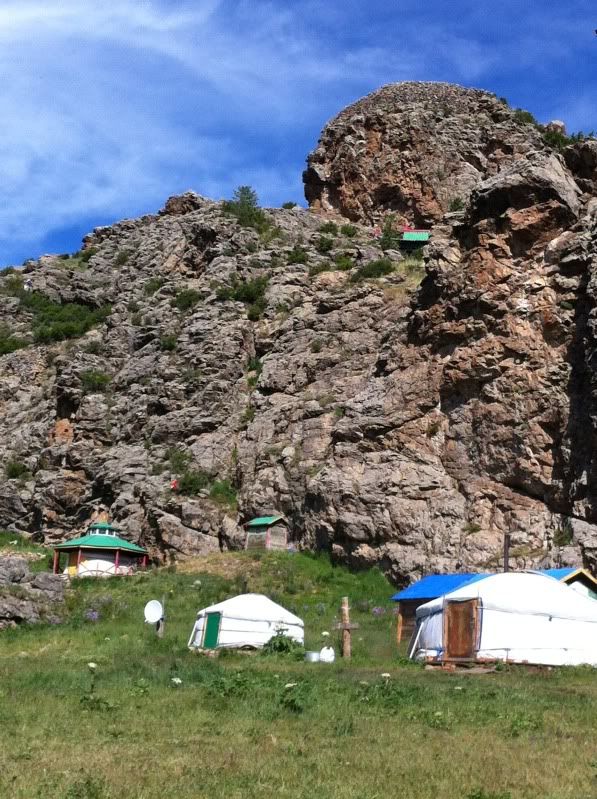
and start a walking-and-climbing combination. At which point you see this:
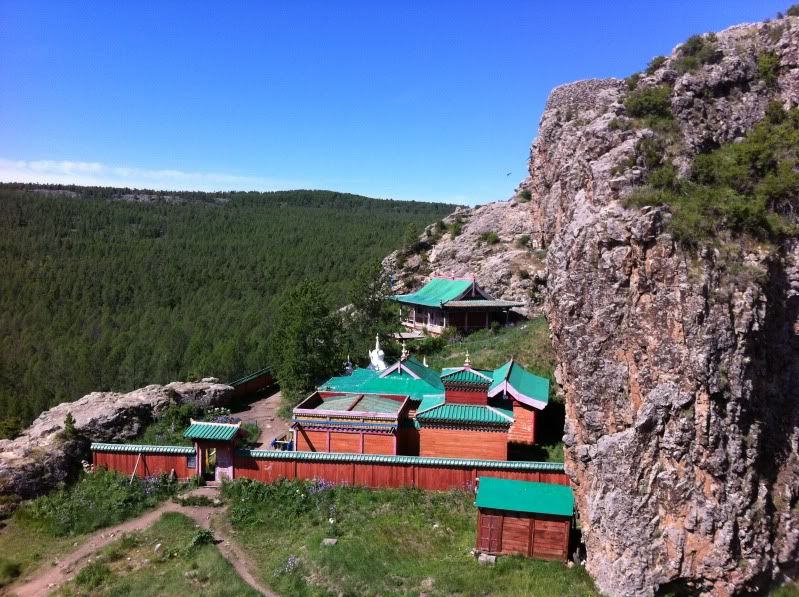
and climb some more. On one of the cliffs, there is supposedly a footprint of the first Enlightened One who brought Tibetan Buddhism to Mongolia. En route, there are lots of sugar cubes and other sweets as gifts on the rocks. Also, zilch fence, wire, or whatever. If you fall, you fall. It's karma. I can't talk about the footprint, but the view is certainly spectacular:
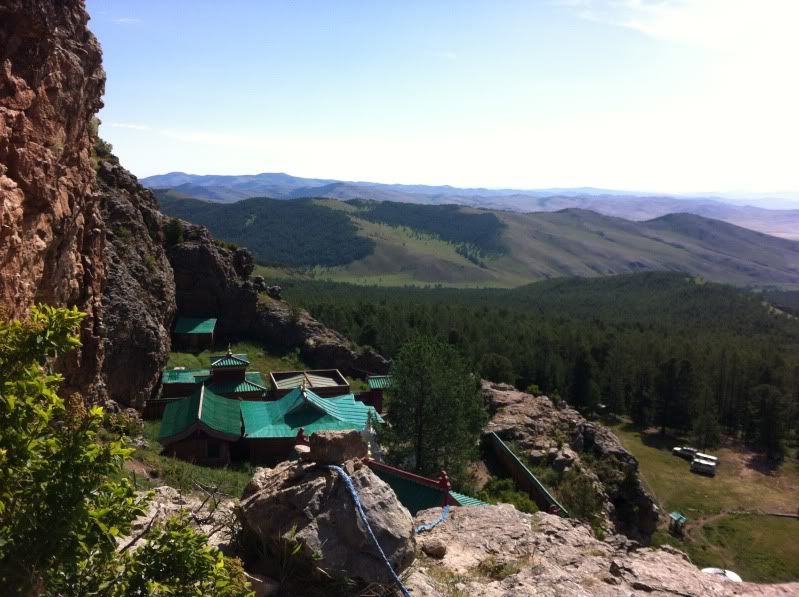
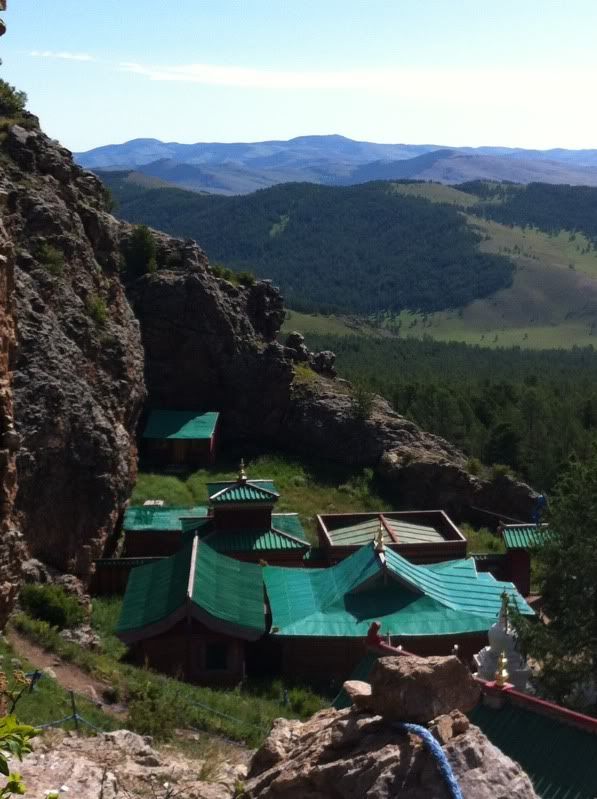
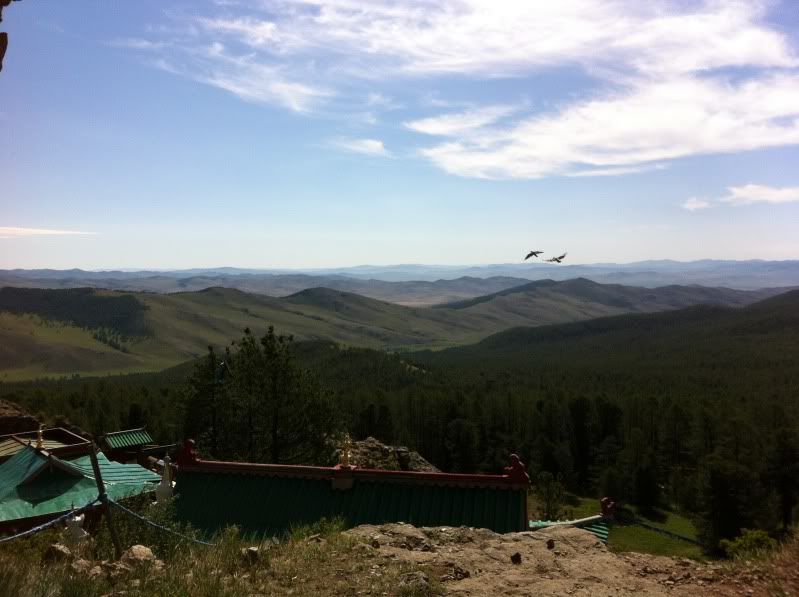
Of course, this is nothing. The true test to the faithful and the curious is to go up to the cave of rebirth, also called uterus cave, for reasons soon to become apparent. But first, here's where you climb up, using your hand and feet and nothing else.

Then you reach the uterus cave and try not to fall of a rock because it's rather crowded with other pilgrims:
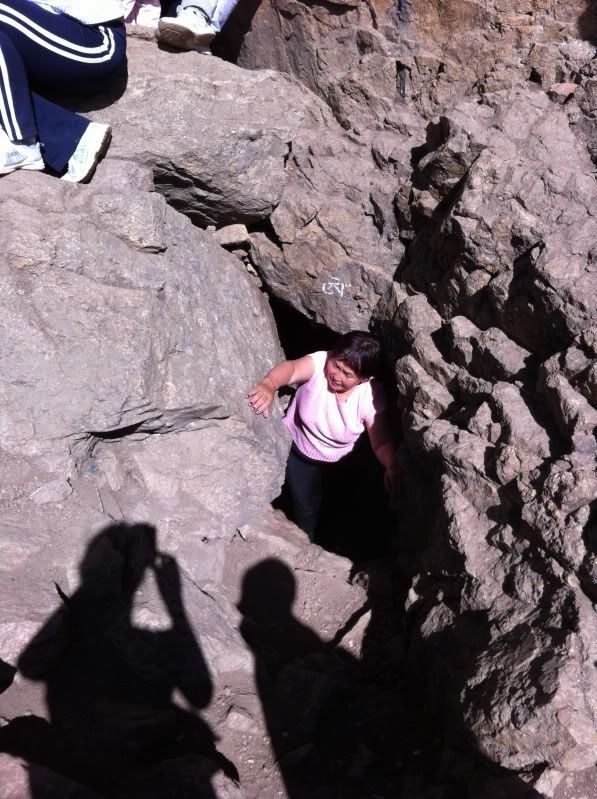
But most importantly, you have a spectacular view over five aimags (provinces):
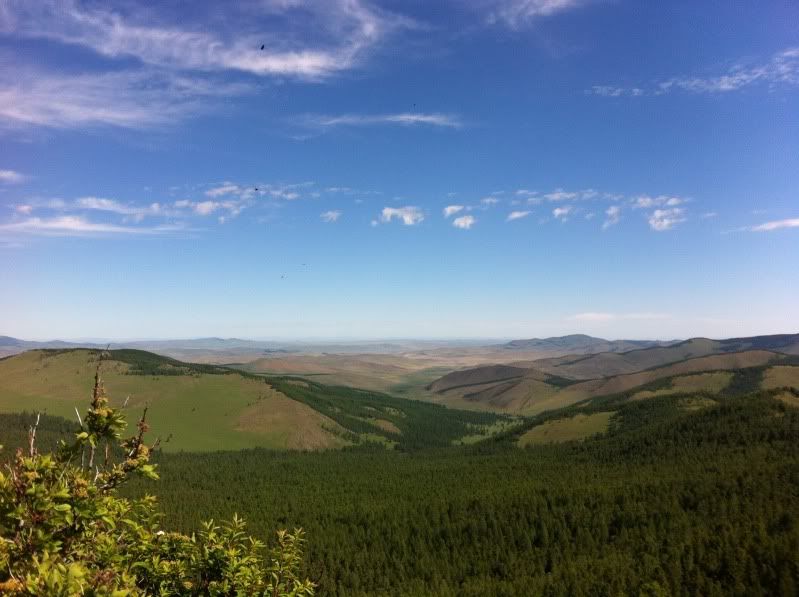
And the ovoo nearby:
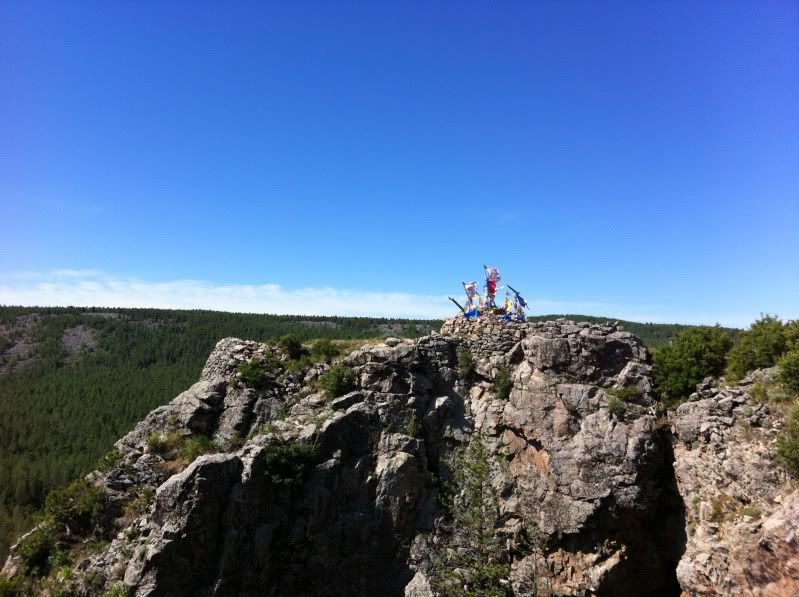
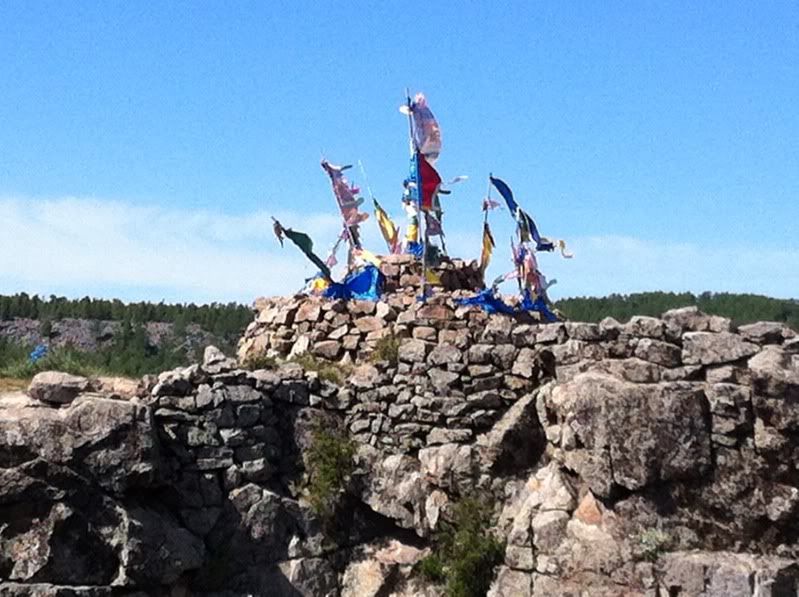
Having made it down again, you can go to the wishing tree and wish to live another year:
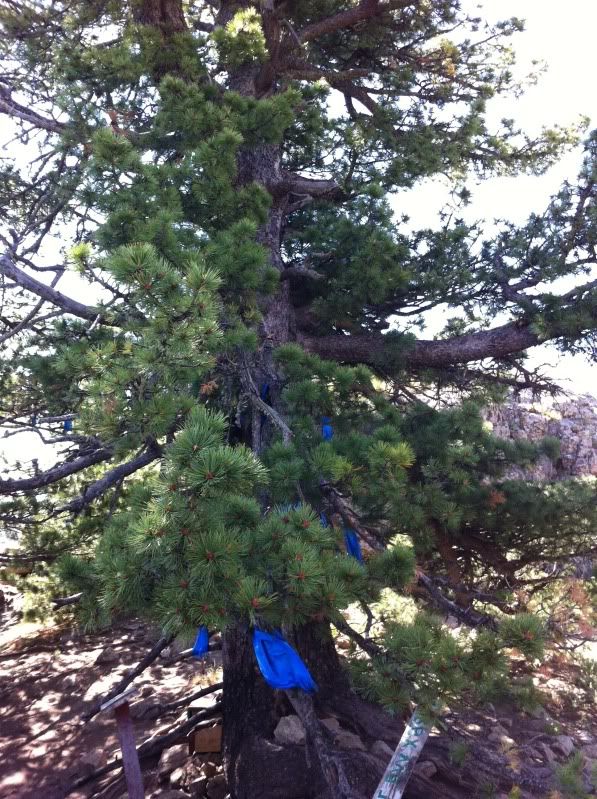
And reward yourself by meeting the next herders once you've walked the entire mountain down, who are not milking mares, as it happens, but Yaks:
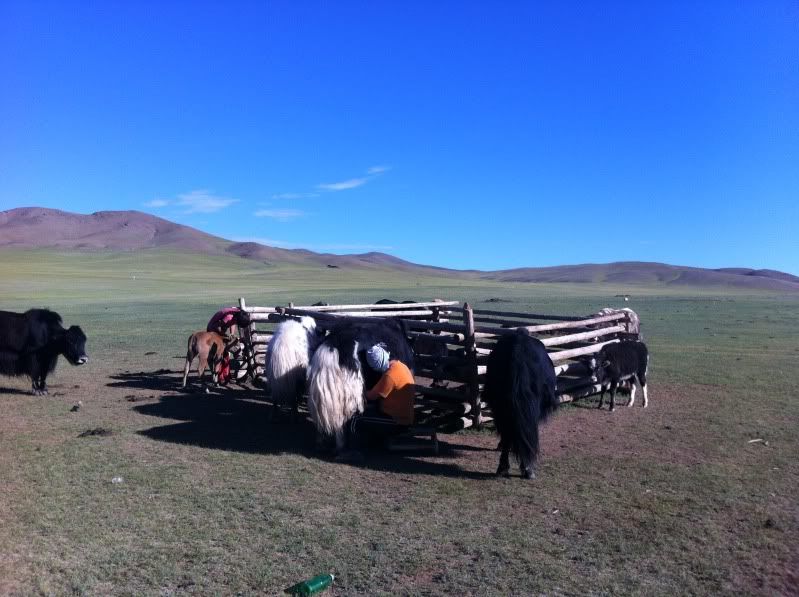
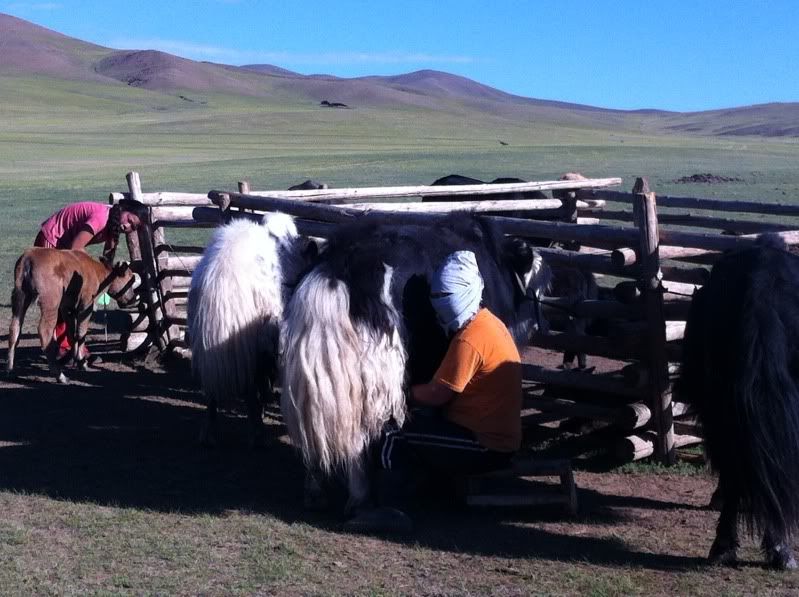
Also, they have a cat, which is rare in Mongolia, because Mongols by and large prefer dogs. However, this lady had a cat and said it was never lacking for food, which isn't because she's feeding it that much but because there are so many mice running around in the grass (which is true!):
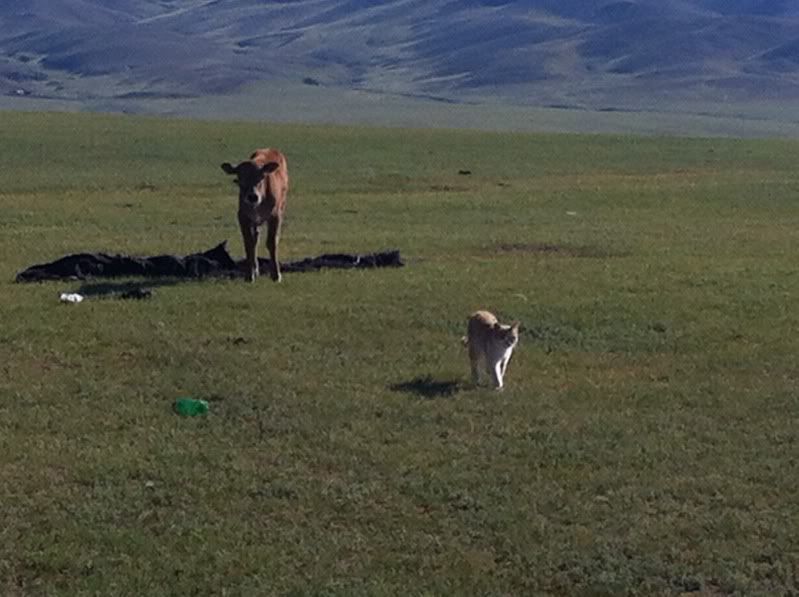
If you follow the Orkhon long enough, you eventually reach Karakorum, or, as it is called today, Karkhorin.
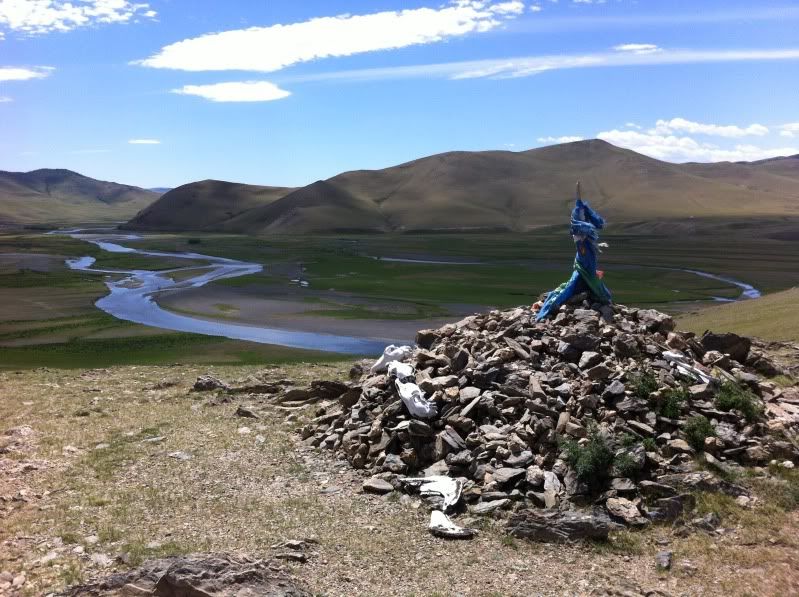
Genghis Khan made plans to establish a city there, but his son Ödedei, spelled Ugudai in English, I believe, because you don't have the Umlaut, was the one who actually did it. On the most prominent mountain/hill, there is a monument showing the three empires which started from Mongolia, the Hun one, the Turk one, and the Mongol one. The blue colour shows current day Mongolia, the green one the surrounding empire in question.
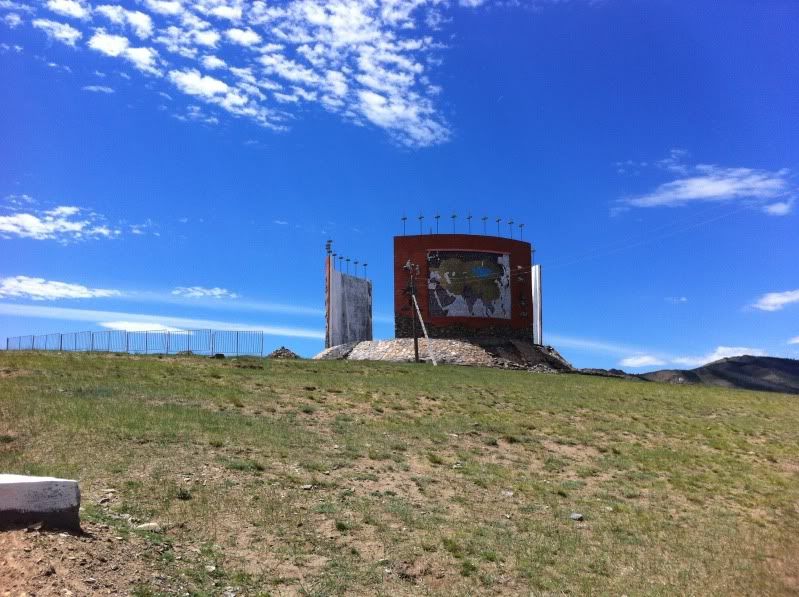
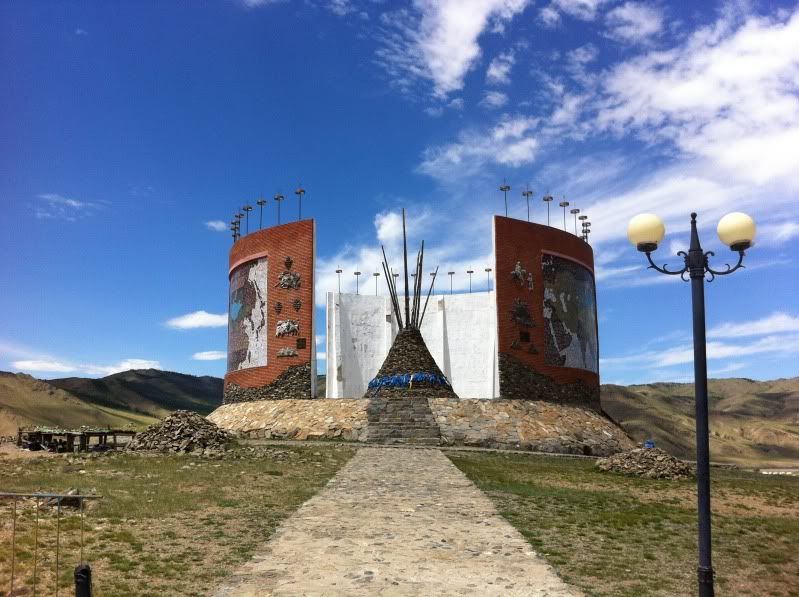
Xiongu (Huns):
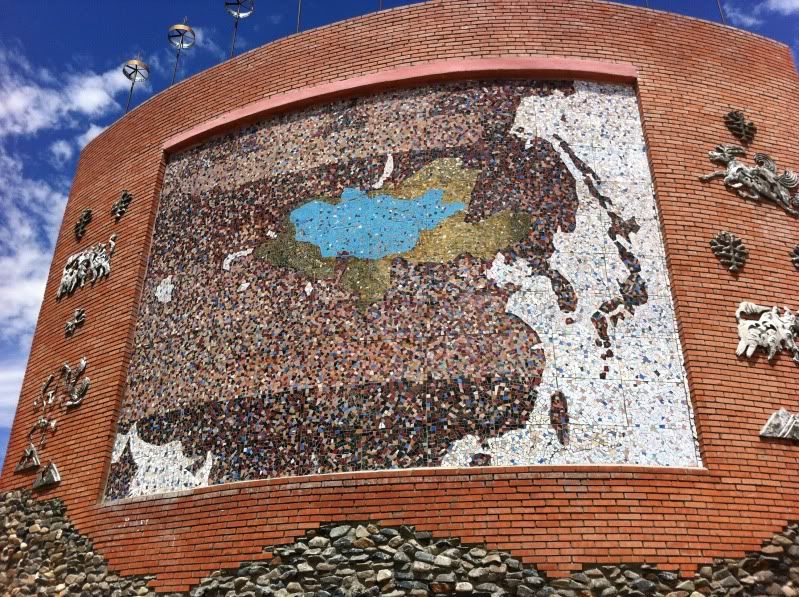
Ancient Turks:
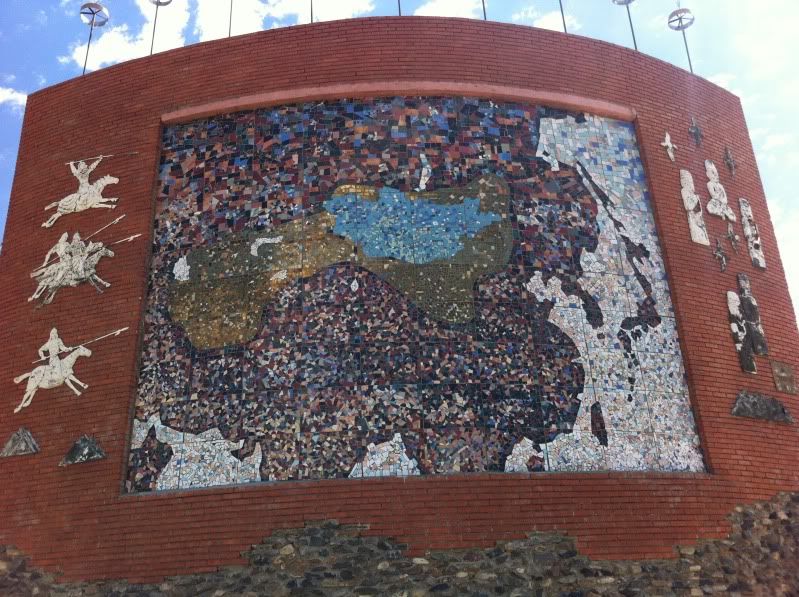
Mongols:
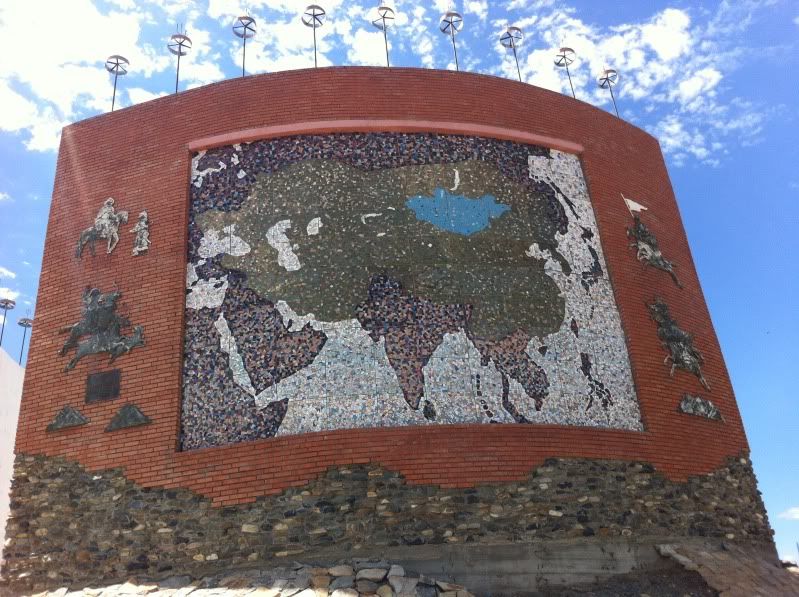
Unfortunately, there isn't anything left of the Karakorum which Ögedei built - which was sacked when the Mongol dynasty in China started by Khubilai Khan and lasting only roughly a century, the Yuan, fell - but two giant stone turtles. We know where the palace used to be but one of the biggest monasteries of the country was built right on on top of it:
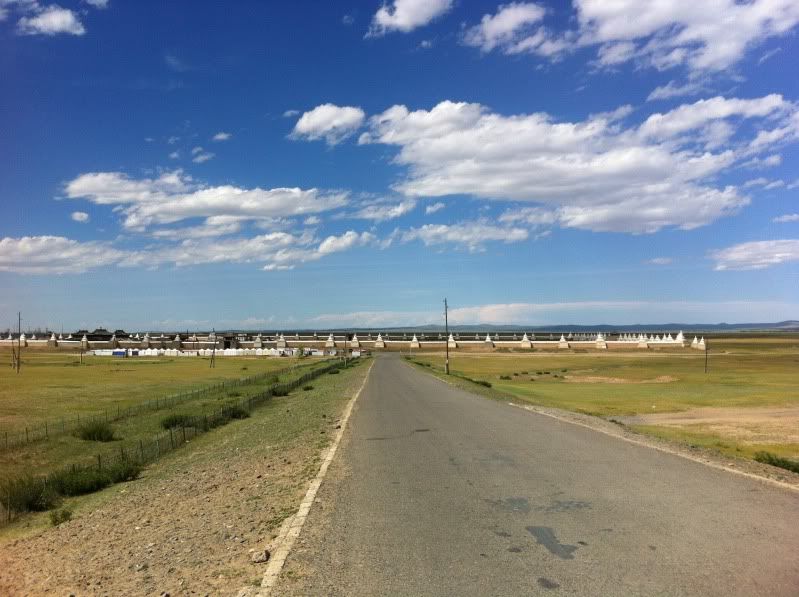
However, the Khans didn't live in the palace anyway. It was simply used for receptions. They lived in a ger in front of it. The door of which had two big turtles as doorstoppers. One still stands in front of the monastery:
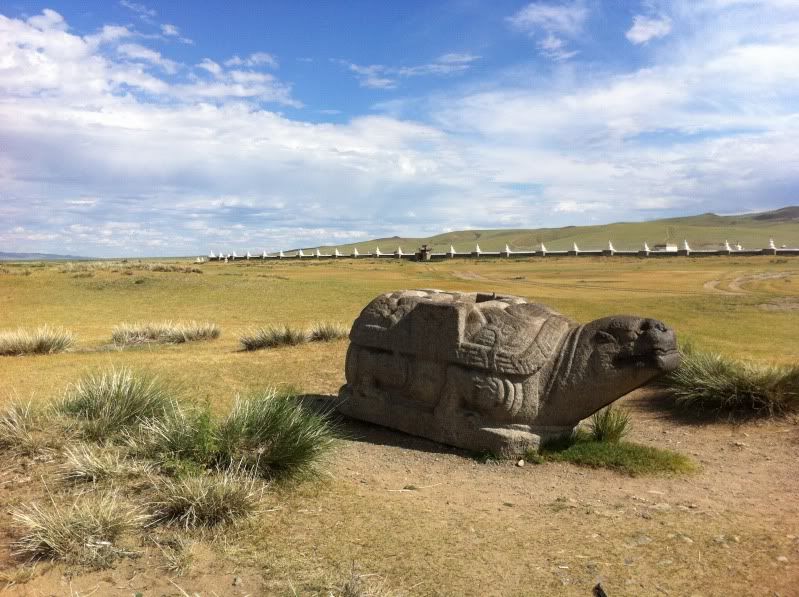
By the way, the head is darker than the rest because people put butter on it, as a gift, for good fortune. Ögedei isn't quite as legendary as "Our great grandfather Genghis Khan", but still much respected. In Ulan Bator, while we were standing in front of the parliament, I had mentioned that unfortunately, he'd drunk himself to death. "He did not!" protested Davaa. I didn't argue but still my inner know-it-all felt vindicated when at the museum in Karakorum, where the live of Ögedei is told in Mongolian and in English, it said that one of his biggest and fatal flaws was that he'd drunk far too much alcohol. The other flaw, btw, was very amusingly phrased in English. Bear in mind the text was written in the first person, as if Ögedei was narrating his life. "I amused bad women."
"Presumably they meant 'I amused myself with bad women'," commented my AP.
"I like this phrasing better," quoth I.
Anyway. The other stone turtle from Ögedei's ger was brought up to another mountain nearby so it could overlook Karakorum:
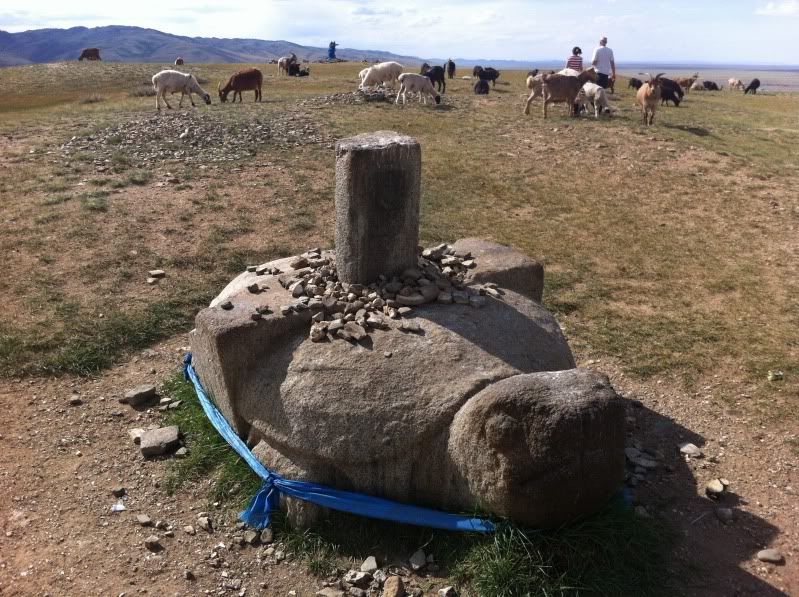
It's near an ovoo which has lots of horse's skulls displayed beneath it. This, according to Davaa, is because the owners of the dead horses want said horses to be reborn in their herds. Only skulls of favourite horses are laid next to an ovoo:
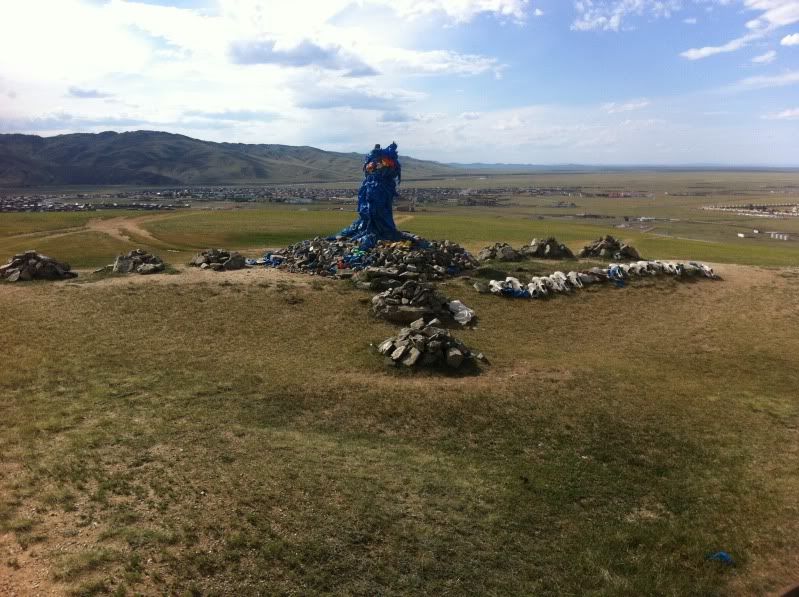
Have a last look at what's left of the very intermittent capital of a nomad people at the height of their power:
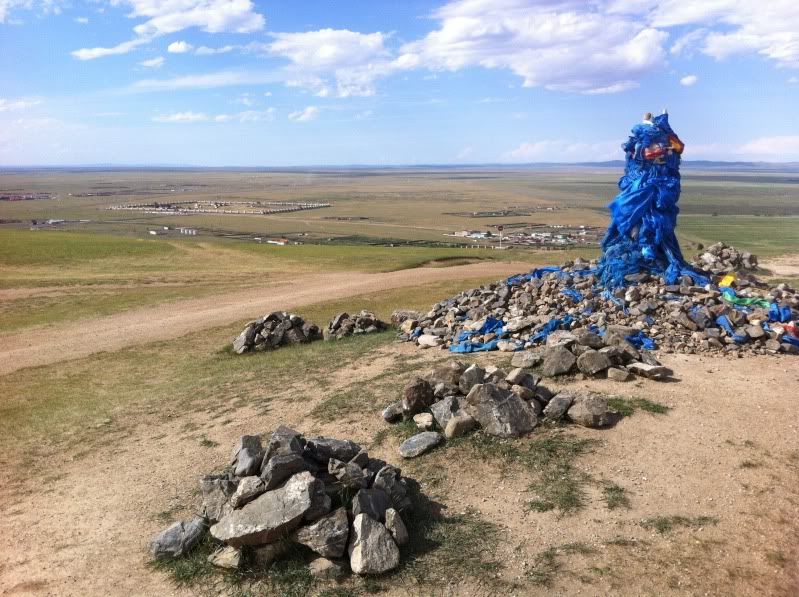
This entry was originally posted at http://selenak.dreamwidth.org/908526.html. Comment there or here, as you wish.
Here's the river in question, of whom later more pictures.

Near the site from which this picture was taken there are so many graves of both Huns and Turks that people speculate a battle may have taken place. The Huns have round gravesites and the Turks square ones.




If you squint, you may be able to detect some of the engravings. They usually depict deer, which is why the stones are also named "deer stones". Nowadays, deer isn't around, but there are lots and lots of horses.

Who are the animal-loving (though never in a vegitarian sense) Mongols most favourite animals. I met a female politician in Ulan Bator who told me every second song in Mongolia is devoted to a horse, and the saying goes that a good Mongol loves: his parents, his horse(s) and his spouse, in that order. And of course, the most popular Mongolian drink since the last 2000 years has been fermented mare's milk. Horses are milked in the summer, after they've given birth to their foals, every two hours. Here's how it's done:




There are always two people necessary for this. One holds the foal near the mare, the other milks the mare.

The milks is then stirred, usually by children who are taught to count by this, a thousand times for each child, traditionally in something like this (though these days in modern buckets):

But the times, they are changing. This used to be the site of a splendid waterfall. Not anymore:

Though the Orkhon itself still runs through the land that depends on it:

Next, a photo which was taken near our camp for the night. We could hear the river in our ger.

You may have noticed the start of another picture made by white stones on the hillside in the distance. This was done through the entire day and by evening, they had two legs and the tail. It wa supposed to be, of course, a horse. The next morning, we set out for the nearby Tuvkhun monastery. For which we had to cross the Orkhon, and I'm not talking about a bridge here. (Though there are some - the last but one photo was taken from one) - just not many. Our driver Myagaa (pronounced Meega) stopped when we came to the river, got out and drank a sip from its water. According to Davaa, Mongol drivers do this in order to show their respect to the river and ask for safe passage.

It worked. The Tuvkhun monastery was familiar to Myagaa, by the way; one of his sons who is studying to be a Lama spent three months up there for meditation. When he was fifteen. In the winter. The whole thing is 2400 metres above ground, and you walk up there. Then you see this:

and start a walking-and-climbing combination. At which point you see this:

and climb some more. On one of the cliffs, there is supposedly a footprint of the first Enlightened One who brought Tibetan Buddhism to Mongolia. En route, there are lots of sugar cubes and other sweets as gifts on the rocks. Also, zilch fence, wire, or whatever. If you fall, you fall. It's karma. I can't talk about the footprint, but the view is certainly spectacular:



Of course, this is nothing. The true test to the faithful and the curious is to go up to the cave of rebirth, also called uterus cave, for reasons soon to become apparent. But first, here's where you climb up, using your hand and feet and nothing else.

Then you reach the uterus cave and try not to fall of a rock because it's rather crowded with other pilgrims:

But most importantly, you have a spectacular view over five aimags (provinces):

And the ovoo nearby:


Having made it down again, you can go to the wishing tree and wish to live another year:

And reward yourself by meeting the next herders once you've walked the entire mountain down, who are not milking mares, as it happens, but Yaks:


Also, they have a cat, which is rare in Mongolia, because Mongols by and large prefer dogs. However, this lady had a cat and said it was never lacking for food, which isn't because she's feeding it that much but because there are so many mice running around in the grass (which is true!):

If you follow the Orkhon long enough, you eventually reach Karakorum, or, as it is called today, Karkhorin.

Genghis Khan made plans to establish a city there, but his son Ödedei, spelled Ugudai in English, I believe, because you don't have the Umlaut, was the one who actually did it. On the most prominent mountain/hill, there is a monument showing the three empires which started from Mongolia, the Hun one, the Turk one, and the Mongol one. The blue colour shows current day Mongolia, the green one the surrounding empire in question.


Xiongu (Huns):

Ancient Turks:

Mongols:

Unfortunately, there isn't anything left of the Karakorum which Ögedei built - which was sacked when the Mongol dynasty in China started by Khubilai Khan and lasting only roughly a century, the Yuan, fell - but two giant stone turtles. We know where the palace used to be but one of the biggest monasteries of the country was built right on on top of it:

However, the Khans didn't live in the palace anyway. It was simply used for receptions. They lived in a ger in front of it. The door of which had two big turtles as doorstoppers. One still stands in front of the monastery:

By the way, the head is darker than the rest because people put butter on it, as a gift, for good fortune. Ögedei isn't quite as legendary as "Our great grandfather Genghis Khan", but still much respected. In Ulan Bator, while we were standing in front of the parliament, I had mentioned that unfortunately, he'd drunk himself to death. "He did not!" protested Davaa. I didn't argue but still my inner know-it-all felt vindicated when at the museum in Karakorum, where the live of Ögedei is told in Mongolian and in English, it said that one of his biggest and fatal flaws was that he'd drunk far too much alcohol. The other flaw, btw, was very amusingly phrased in English. Bear in mind the text was written in the first person, as if Ögedei was narrating his life. "I amused bad women."
"Presumably they meant 'I amused myself with bad women'," commented my AP.
"I like this phrasing better," quoth I.
Anyway. The other stone turtle from Ögedei's ger was brought up to another mountain nearby so it could overlook Karakorum:

It's near an ovoo which has lots of horse's skulls displayed beneath it. This, according to Davaa, is because the owners of the dead horses want said horses to be reborn in their herds. Only skulls of favourite horses are laid next to an ovoo:

Have a last look at what's left of the very intermittent capital of a nomad people at the height of their power:

This entry was originally posted at http://selenak.dreamwidth.org/908526.html. Comment there or here, as you wish.